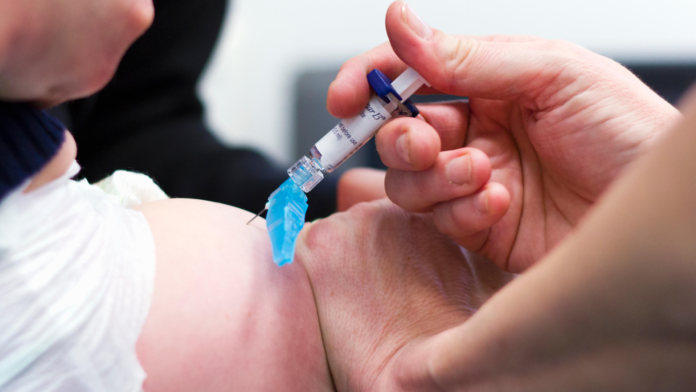Kighoste vaccine, a modern marvel in the fight against this dangerous disease, whooping cough, scientifically known as pertussis, has long been a significant health threat, especially to infants and young children. The disease, caused by the bacterium Bordetella pertussis, can lead to severe coughing fits, making it difficult to breathe. Despite the availability of antibiotics, prevention remains crucial due to the contagious nature of pertussis. This article is exploring its development, mechanism, benefits, and the future for better health.
Understanding Whooping Cough
Before delving into this Kighoste Vaccine, it’s essential to grasp the gravity of whooping cough. Pertussis spreads through respiratory droplets when an infected person coughs or sneezes. The disease is particularly dangerous for infants under six months who are too young to be fully vaccinated. In severe cases, pertussis can cause pneumonia, seizures, brain damage, and even death.
Symptoms of whooping cough typically begin with mild respiratory issues such as a runny nose, mild fever, and a cough. These initial symptoms resemble the common cold. However, after one to two weeks, the cough evolves into severe coughing fits that can last for up to ten weeks or more. These fits often result in a high-pitched “whoop” sound when the person breathes in, hence the name “whooping cough.”
The Kighoste Vaccine: An Overview
This vaccine is designed to provide immunity against Bordetella pertussis. It is an acellular pertussis vaccine, meaning it contains purified components of the bacteria rather than the whole bacteria. This design reduces the risk of side effects compared to older, whole-cell pertussis vaccines.
Kighoste is typically administered as part of a combination vaccine, which also protects against diphtheria and tetanus (DTaP vaccine). The vaccine is given in a series of doses at specific intervals: at 2, 4, and 6 months of age, with booster doses at 15-18 months and 4-6 years of age. Adolescents and adults, especially those in close contact with infants, are recommended to receive booster doses to maintain immunity.
Mechanism of Action
This vaccine works by introducing small, harmless pieces of the pertussis bacterium into the body. These components stimulate the immune system to produce antibodies against the bacteria without causing the disease. If a vaccinated person later encounters Bordetella pertussis, their immune system can quickly recognize and attack the bacteria, preventing the onset of whooping cough.
Efficacy and Impact
- Reduction in Incidence: The vaccine has dramatically reduced the incidence of whooping cough.
- Historical Context: Pertussis was a leading cause of infant mortality before widespread vaccination.
- Current Impact: The number of pertussis cases and deaths has significantly decreased due to vaccines like Kighoste.
- Efficacy Rate: The vaccine is highly effective, with an efficacy rate of about 85-90%.
- Disease Severity: Even when vaccinated individuals contract pertussis, the disease is typically milder and shorter in duration compared to unvaccinated individuals.
Safety and Side Effects
- General Safety: The vaccine is generally safe and well-tolerated.
- Common Side Effects: Mild and temporary reactions include redness or swelling at the injection site, fever, and irritability.
- Serious Side Effects: Rare, but can include allergic reactions.
- Ongoing Monitoring: Health professionals continuously monitor the vaccine’s safety to ensure it remains safe for public use.
Challenges and Future Directions
- Waning Immunity: Protection from the vaccine decreases over time, necessitating booster doses to maintain immunity.
- Outbreaks in Vaccinated Populations: Pertussis outbreaks have occurred even in populations with high vaccination rates.
- Need for Ongoing Surveillance: Continuous monitoring and research are required to address these challenges.
- Enhancing Effectiveness: Researchers are working to improve the vaccine’s effectiveness and duration of immunity.
- Innovative Delivery Methods: To increase accessibility and compliance, new vaccine delivery methods, such as nasal sprays and skin patches, are being explored.
- Studying Pathogen Evolution: Scientists are examining the genetic makeup of Bordetella pertussis to understand bacterial evolution better and develop strategies to counteract vaccine resistance.
Conclusion
The Kighoste vaccine represents a significant advancement in the battle against whooping cough. By providing robust immunity against Bordetella pertussis, the vaccine has saved countless lives and reduced the burden of this debilitating disease. While challenges remain, ongoing research and innovation promise to enhance the effectiveness and longevity of the vaccine, ensuring that whooping cough becomes a relic of the past.
In the fight against infectious diseases, this vaccine stands as a testament to the power of vaccination in safeguarding public health. As we continue to advance in medical science, the lessons learned from the success of the Kighoste vaccine will undoubtedly pave the way for future breakthroughs in disease prevention and control.



